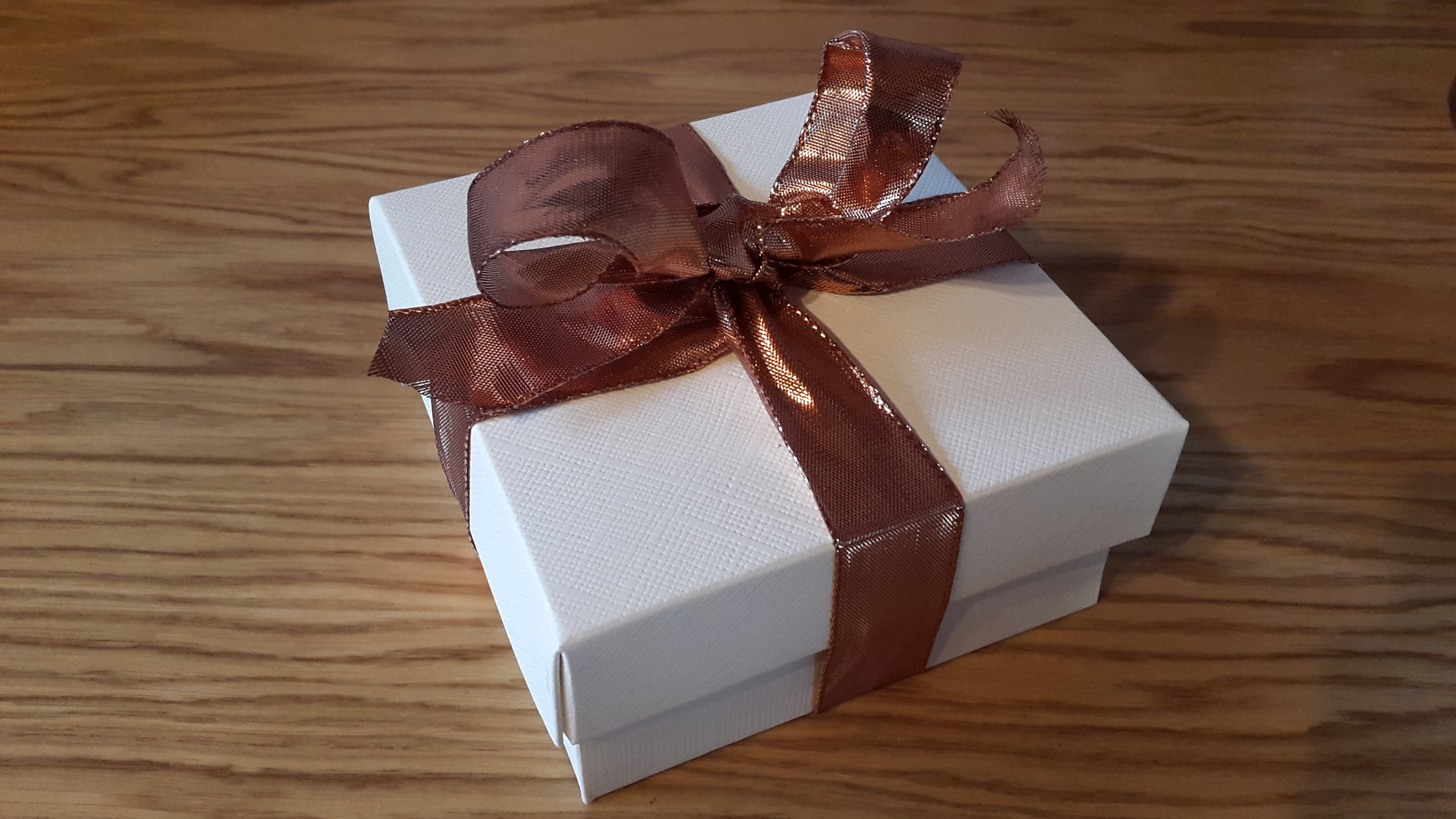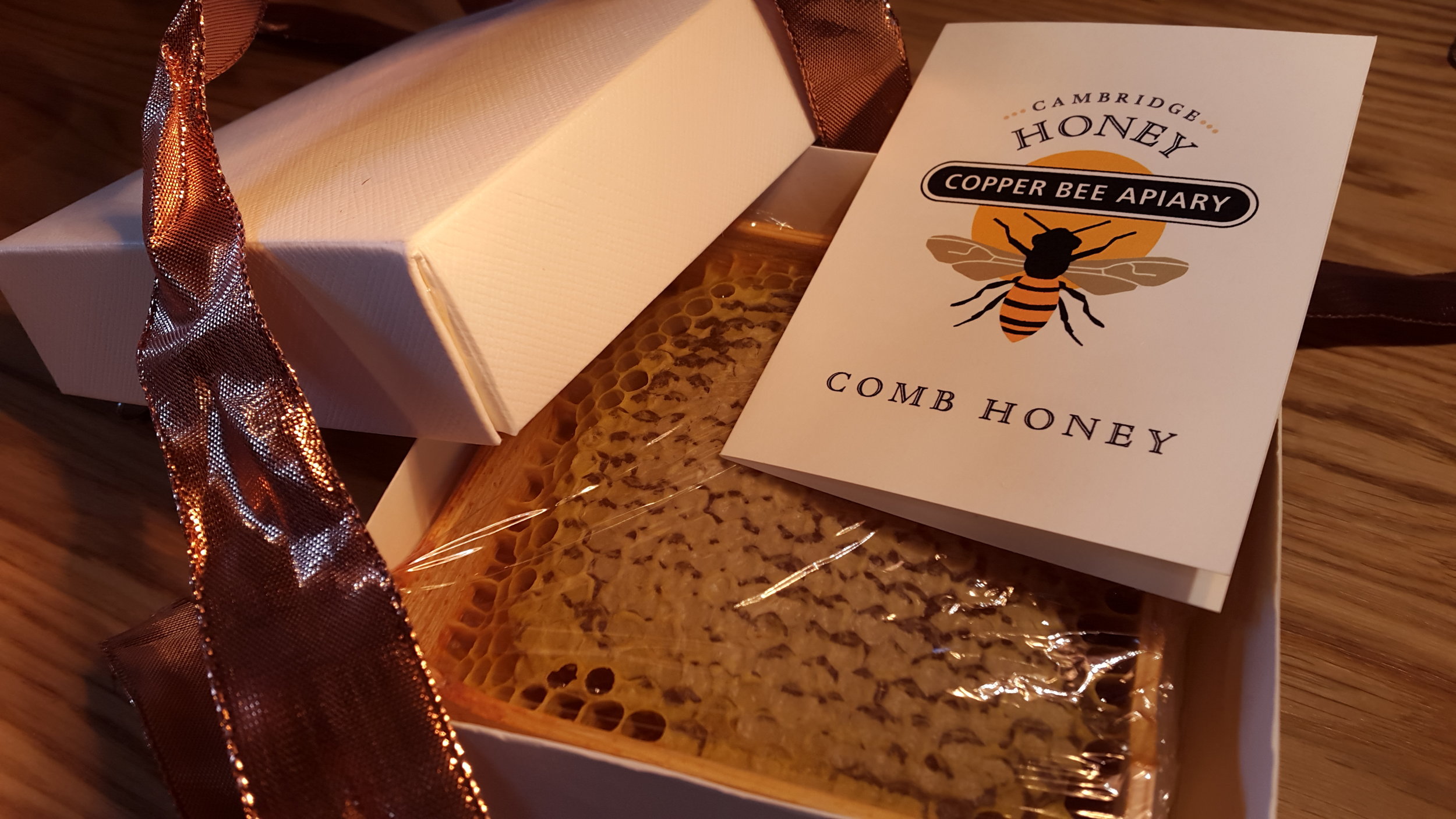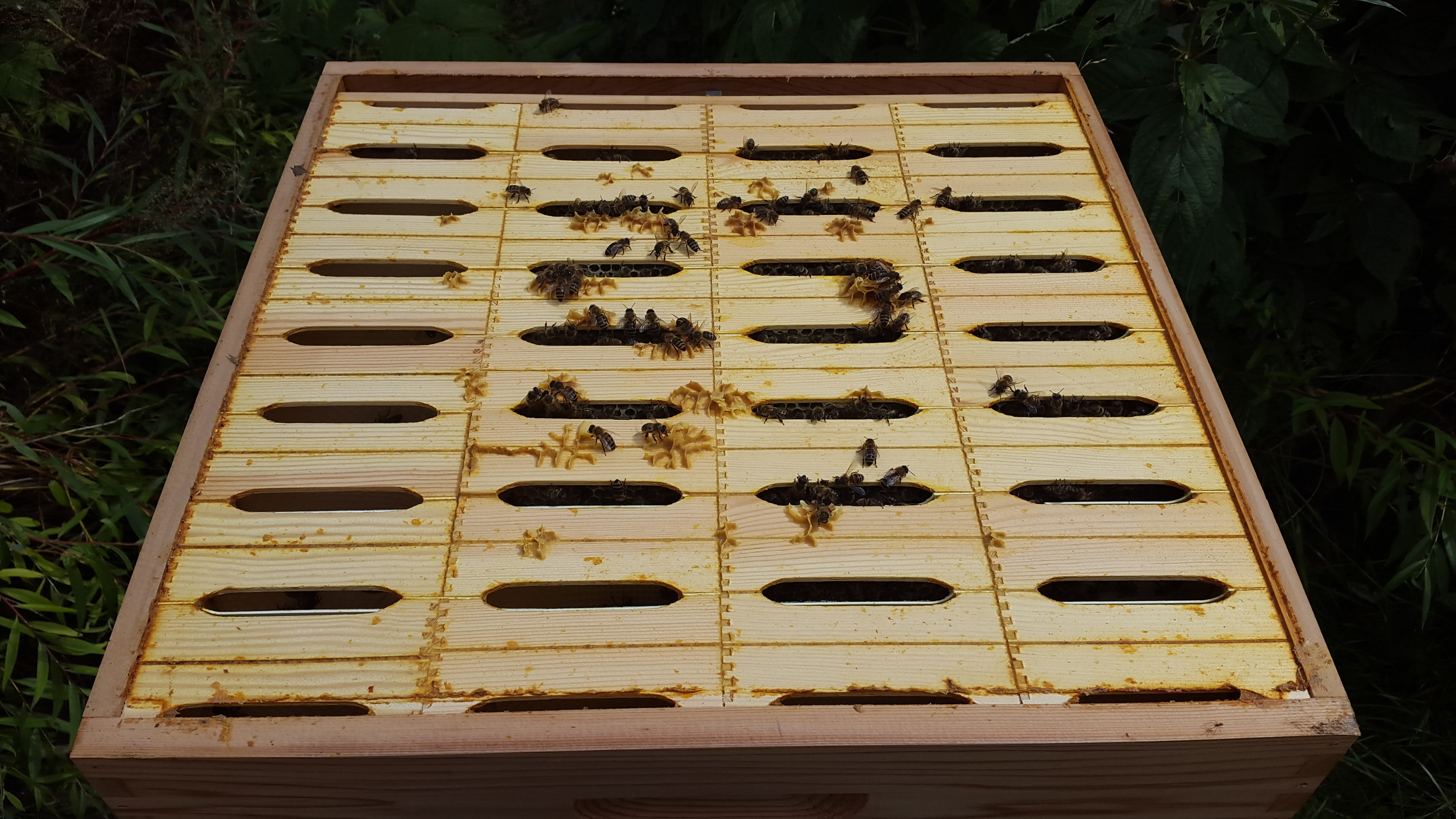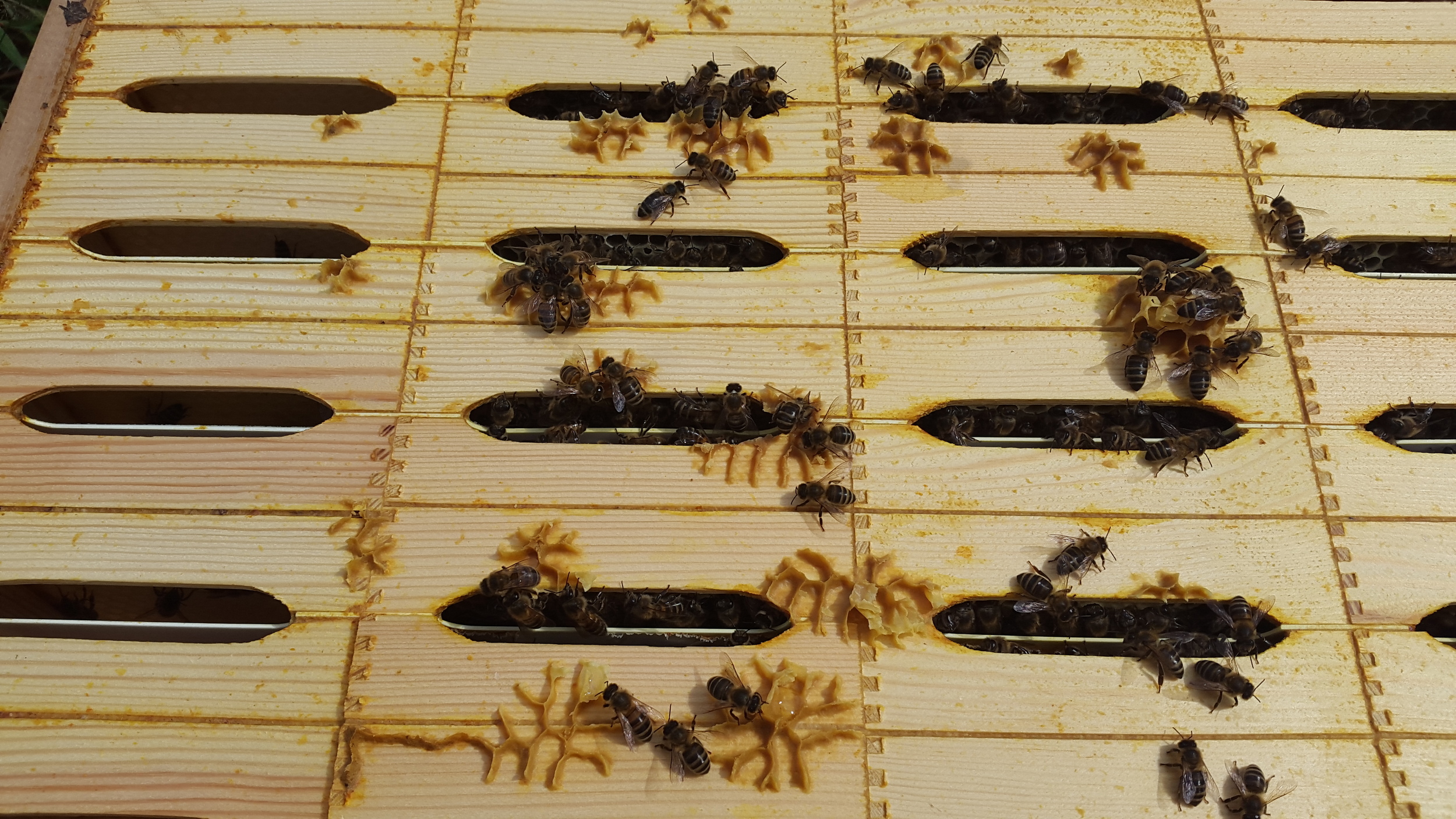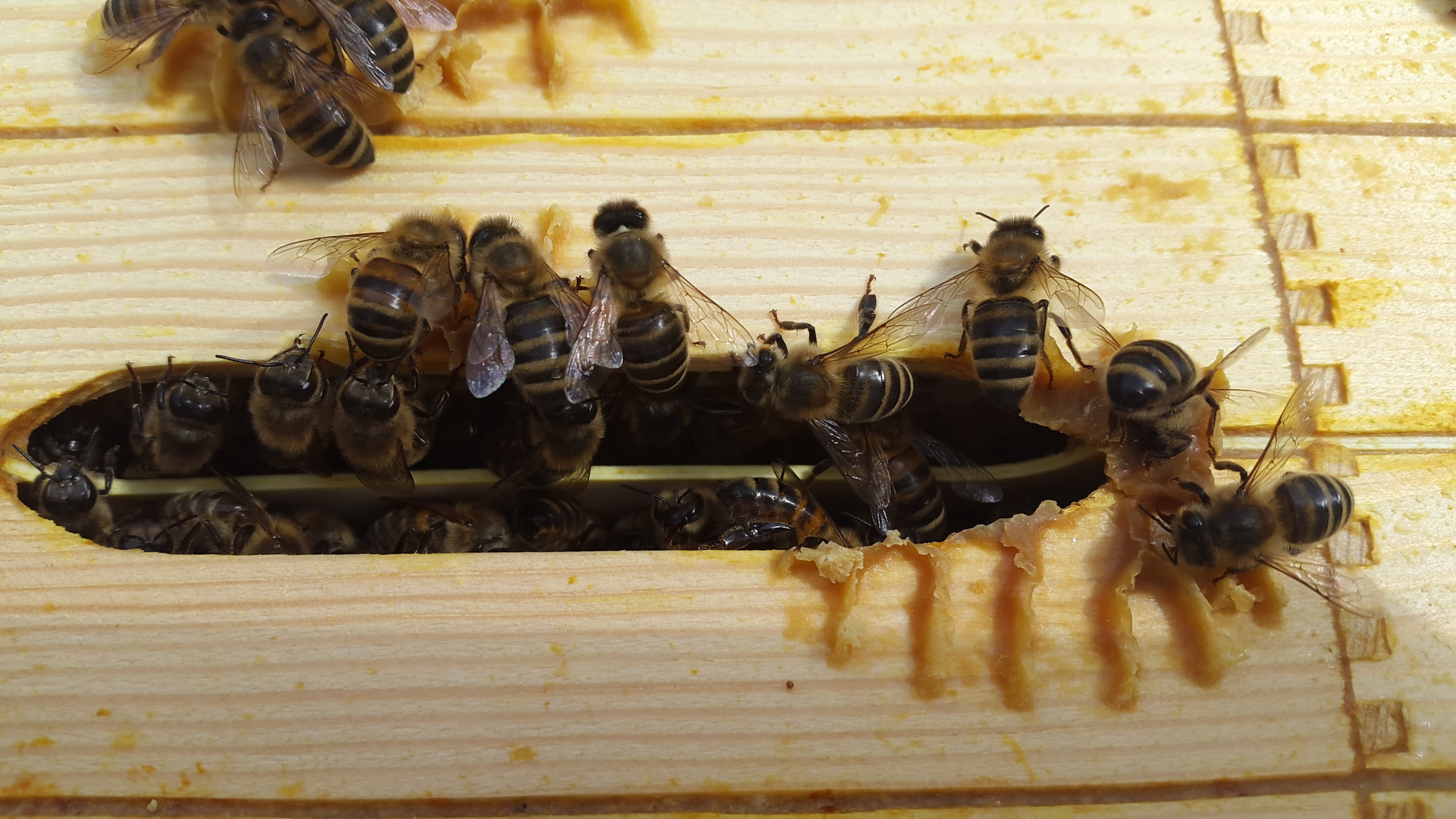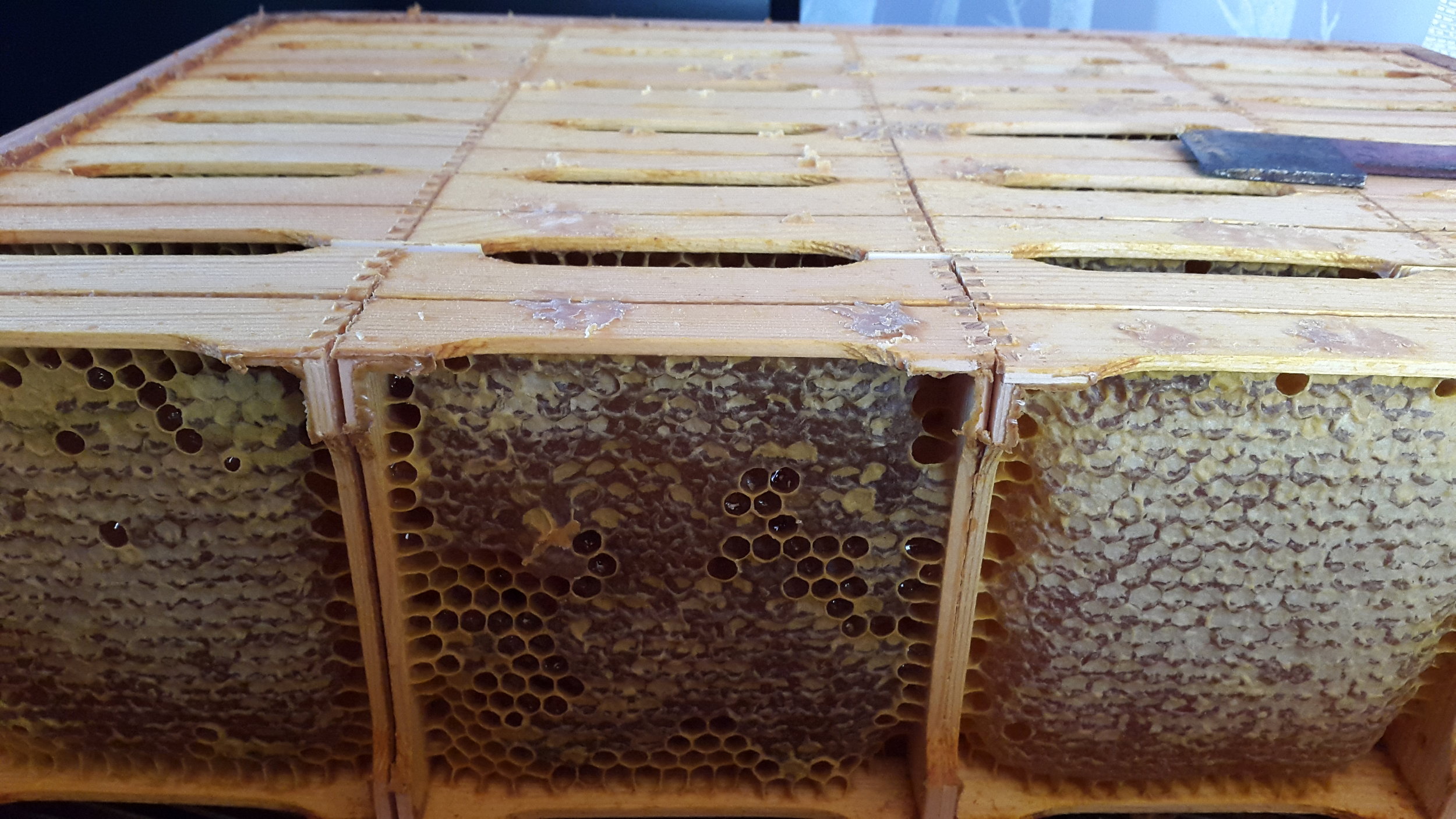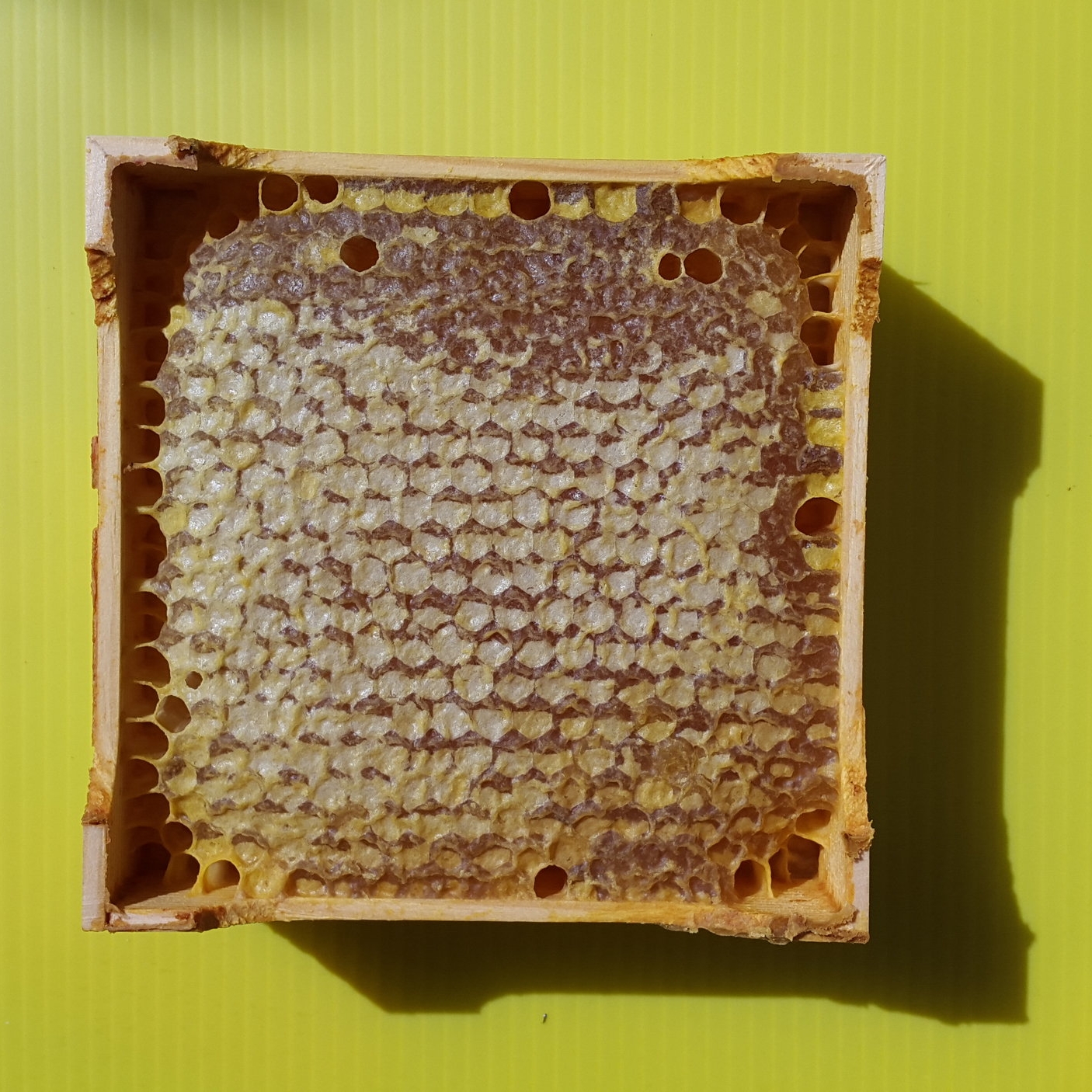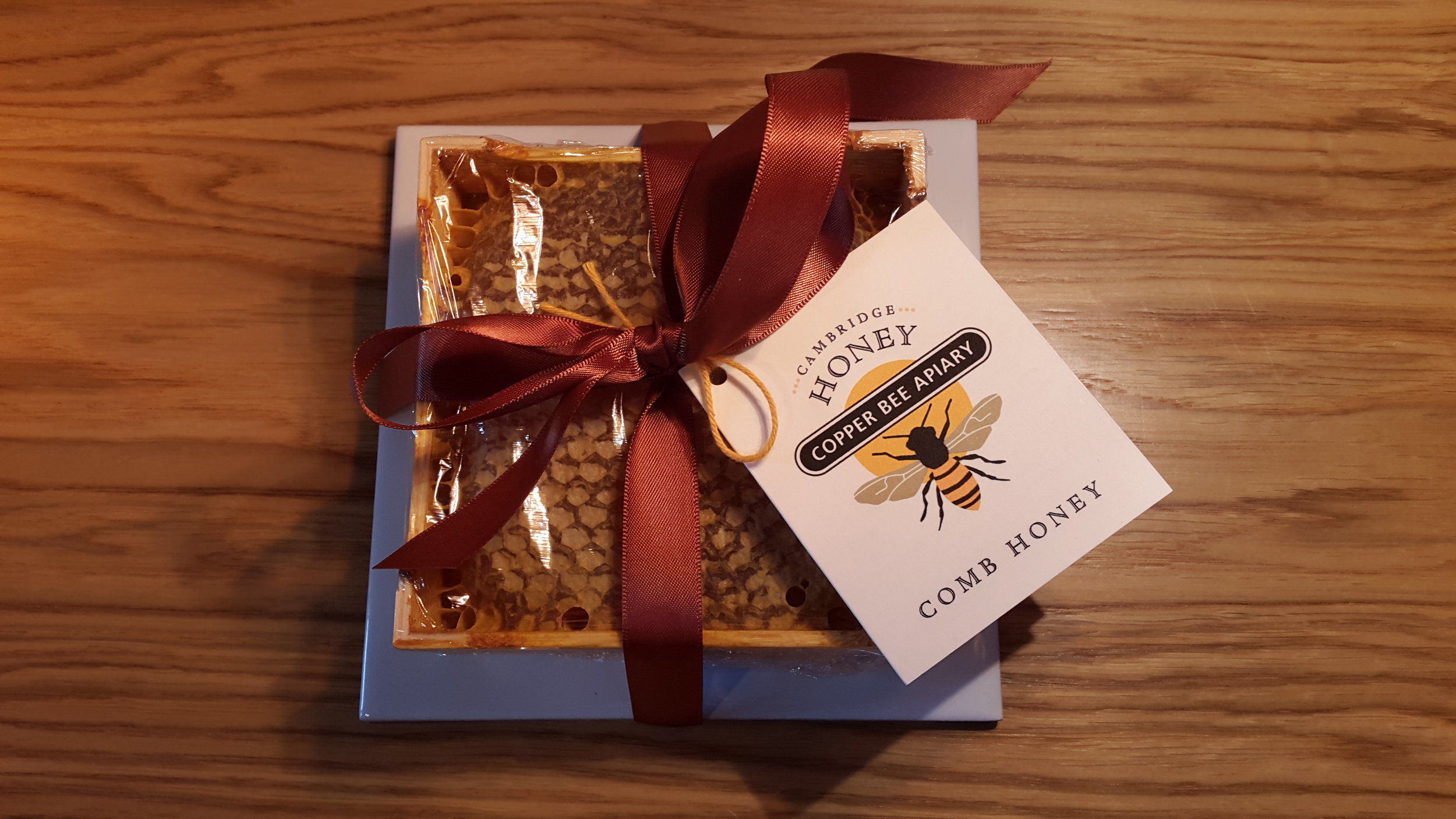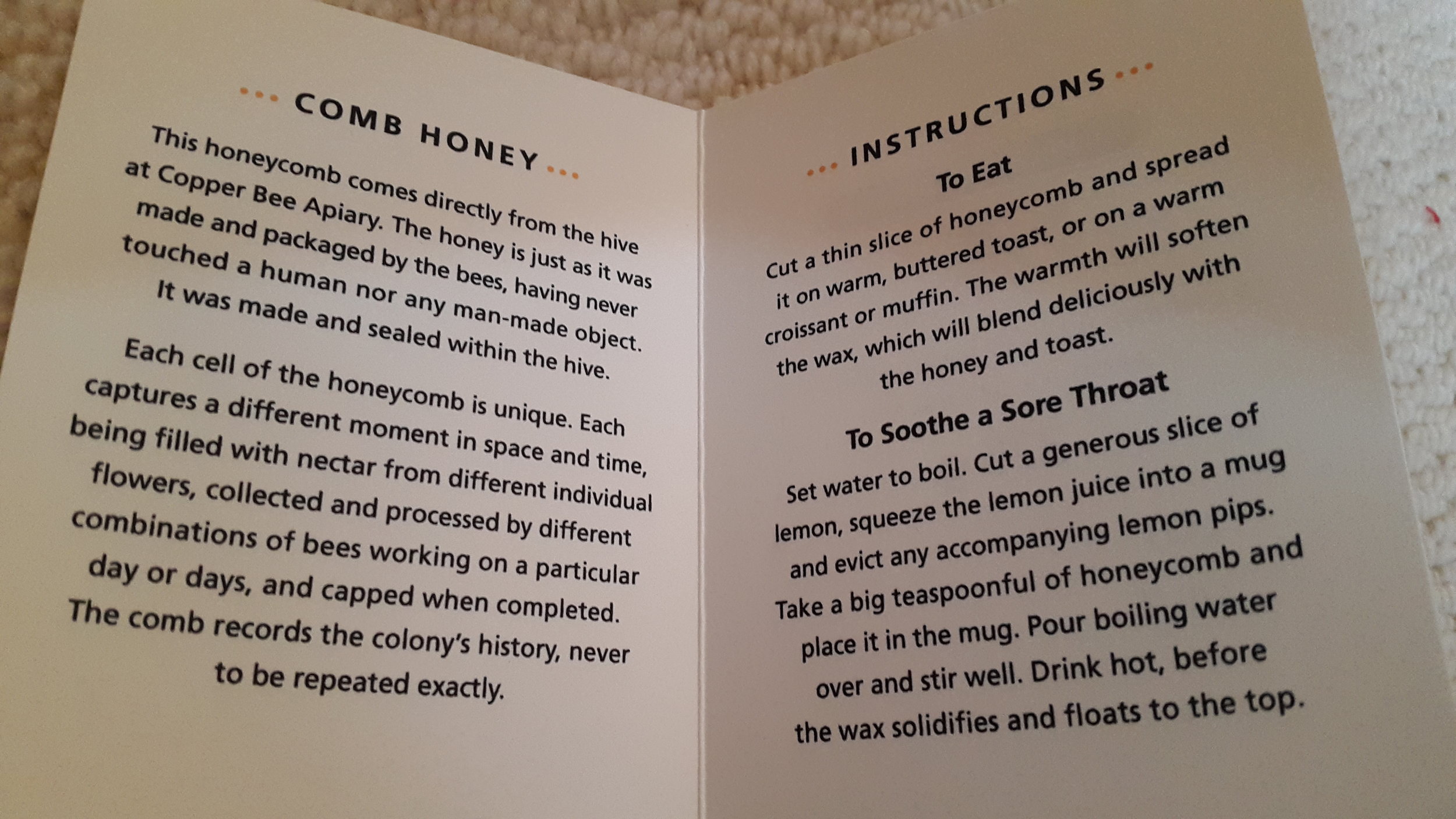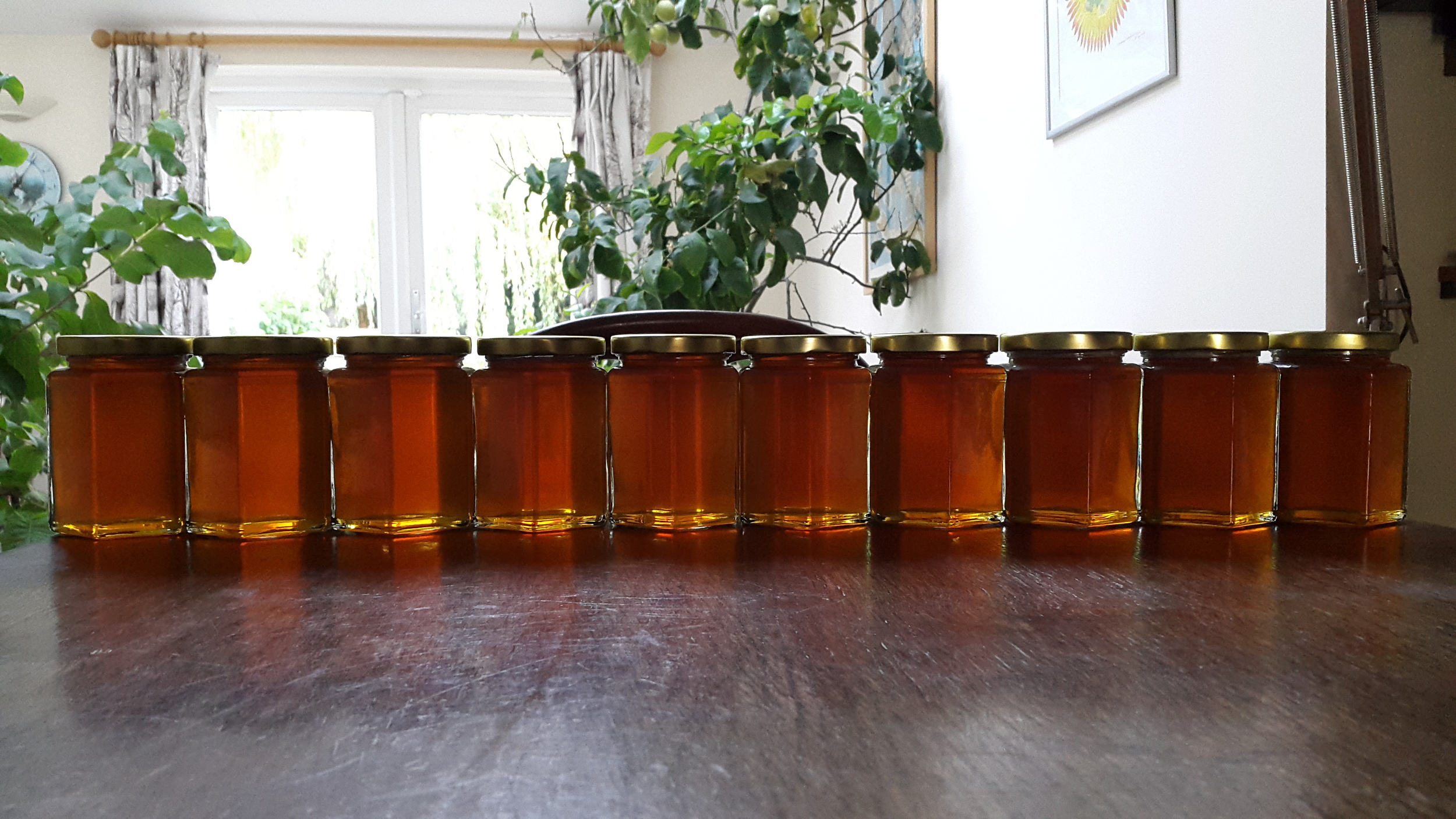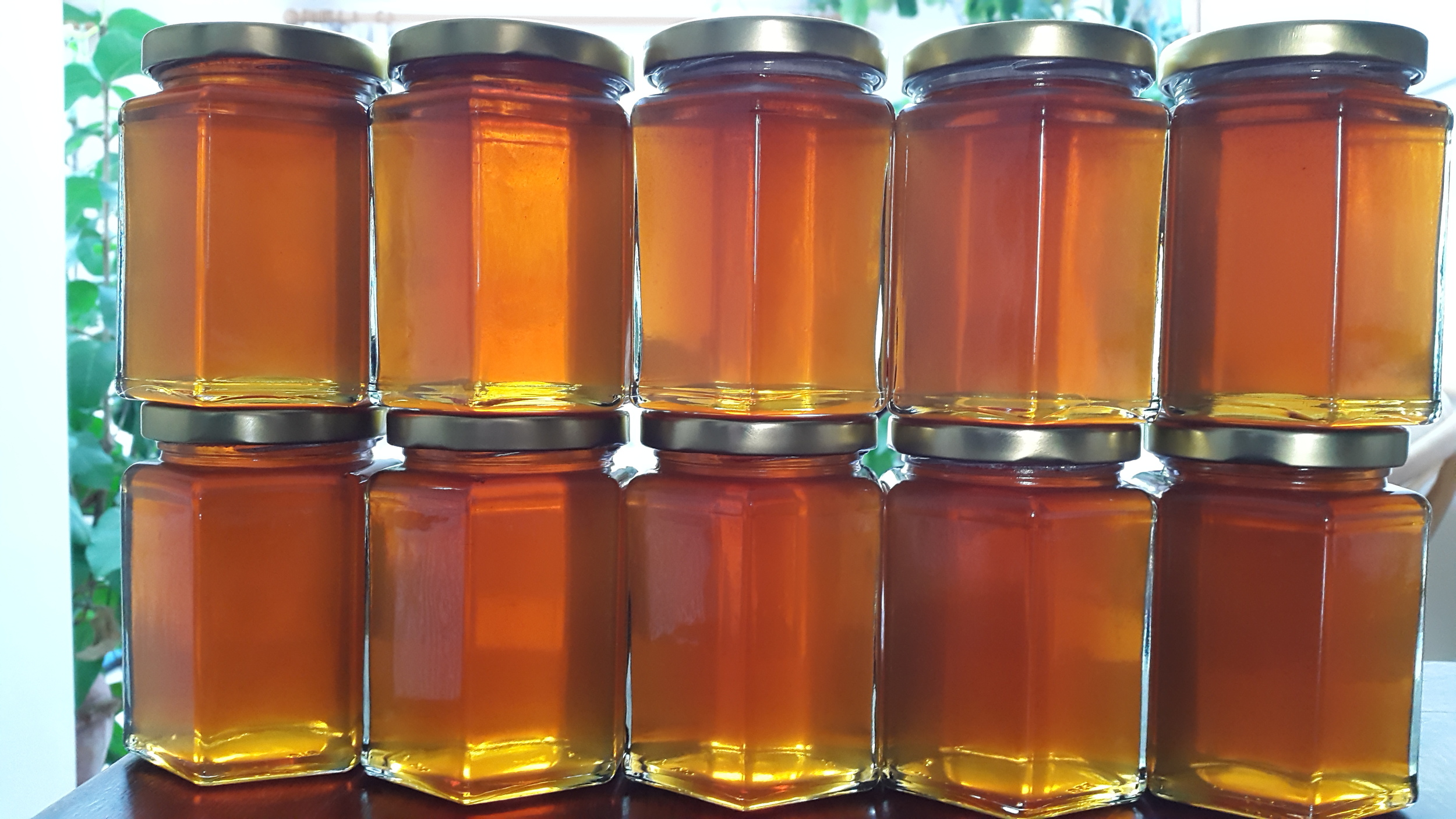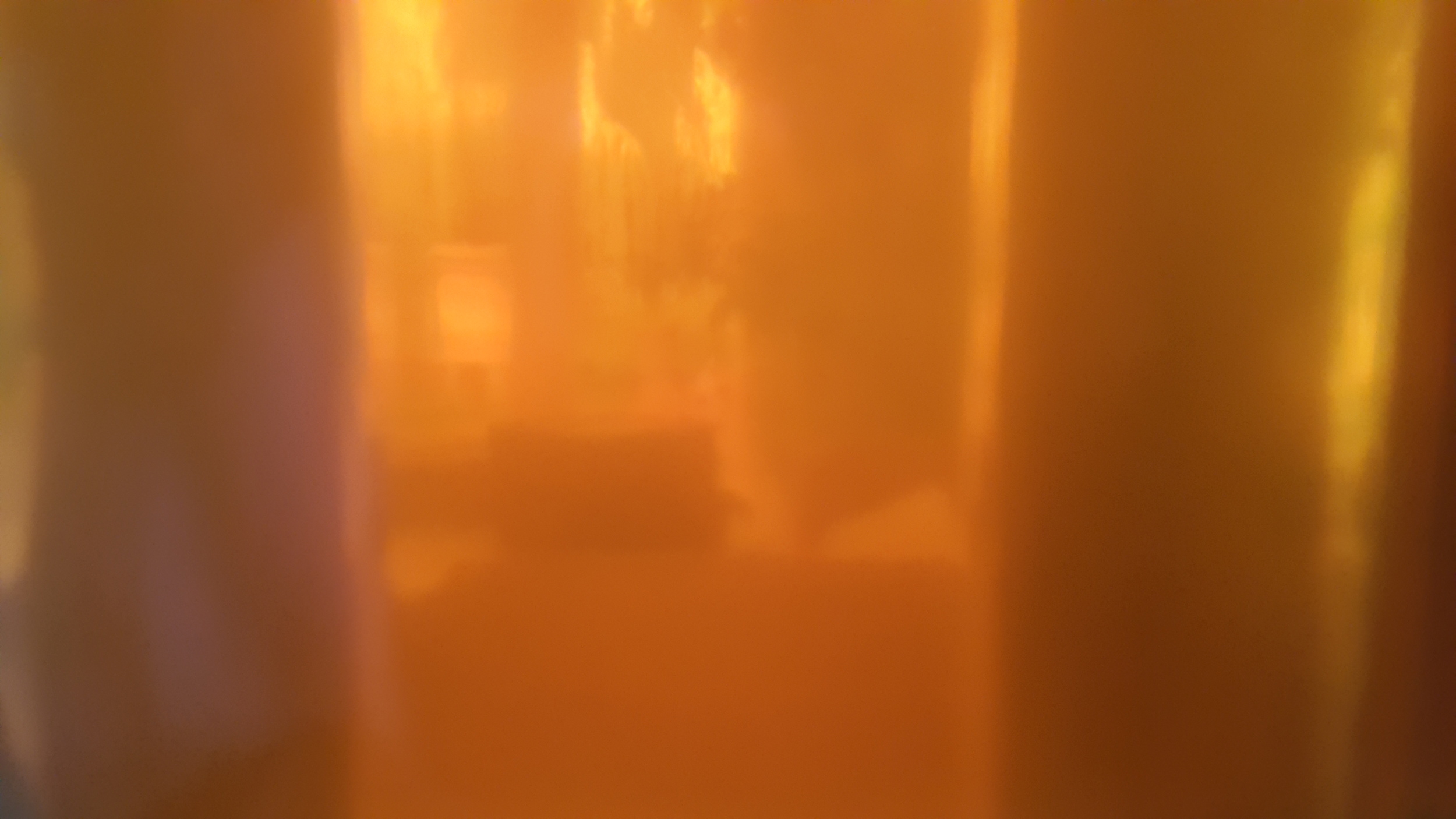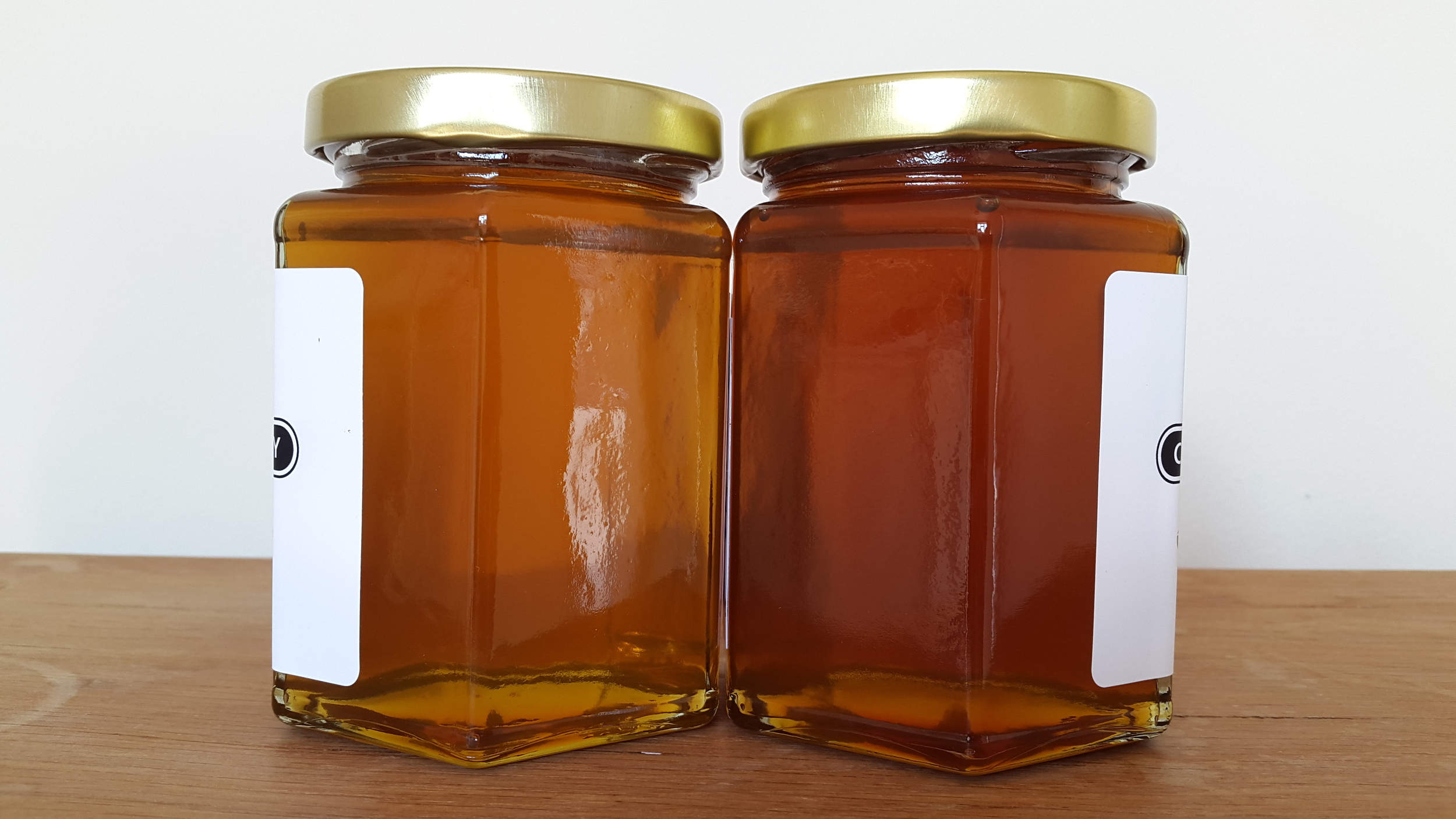This past summer, the bees in the Copper Hive worked on a new project: sections of comb honey.
Guess what people have got for Christmas!
I put the section rack on the hive in June. It has an array of individual boxes for the bees to build honeycomb in. Take off a full section rack and voilà, a set of neatly packaged comb honey sections, each in its own wooden box.
Although you can just cut up ordinary frames of honeycomb, or indeed press out squares of it using a bespoke device, I rather like the neatness and simplicity of having the bees build the comb directly in the individual wooden boxes. The outsides of the boxes get marked with beeswax and propolis, but that is the fate of all objects placed into beehives, reflecting the fact that honeycomb is made in the natural world not a sterile factory.
Also, wooden sections require precious little handling, so producing comb honey this way is neater and cleaner than manually slicing up the comb into blocks to fit in little plastic trays.
Further reading, eating and drinking
I melt honeycomb into a hot drink with lemon, and I hadn't given much thought to how to eat it. But then I read this question:
Most humble apologies for the following dumb question:
Are you supposed to eat the wax or spit it out? Do you swallow it? I assume if it is all mixed in with corn meal mush or oat meal, then you’re not going to be bothering much with separating the wax from the food in your mouth. But I don’t presume to know that, either.
I just filtered all the wax out of my comb honey and rendered it because it seemed like the “thing to do.” Next time, I’ll set at least a little aside for “eating” or whatever you are supposed to do with it in your mouth.
The person to whom this endearing question was asked is American Master Beekeeper, Rusty Burlew, who wrote about comb honey and how to eat it. Her recommendations in brief: spread it on hot, lightly buttered toast, chew it and swallow it. The wax will soften and blend deliciously with the honey and toast. Don't just eat the honeycomb directly because you'll end up with a lump of wax like chewing gum in your mouth. You can read Rusty's reminiscences and advice yourself on her website Honey Bee Suite. I've included her serving suggestion in the information leaflet that I include with each gift comb.
I hope you enjoy your honeycomb however you eat (or drink) it!
Ingredients: Brandy, honey, blackberries.
Honey stirred into warm brandy, freshly-picked blackberries steeped in the brandy-honey mixture, then the mixture filtered. A by-product of making the drink is a pile of brandy-soaked fruit, which I think will go very well with vanilla ice-cream.
It developed a bitterness, and tastes appropriately medicinal.
I had thought that the jug I used to make it would follow the one-way path that various other items have taken from kitchen to beekeeping kit, but it cleaned up well.
P.S. The keen-eyed will have noticed a beehive in each photograph of the tincture.
I sent a jar each of both this year's honeys to my Dad, perfumer Dr John King, and invited his opinions.
Read More
Propolis is the reddish brown sticky resin that bees stick things together with, bung up gaps with, and strengthen wax with. Apparently they collect it from trees. I have seen propolis foragers in the hive - on their rear legs where the pollen basket is they have a dollop of propolis like a bead of glue.
One of the wonderful things about propolis is its scent. It is ylang ylang, vanilla, a pine forest on a hot day, and a glass of mulled wine. And it emits a toasted version of these scents when burnt with a blowtorch, which enlivens the task of sterilising a second hand hive or flame-cleaning a queen excluder.
Propolis is said to have antiseptic qualities. So when cleaning the Smith Hive in preparation for storage, I decided to "harvest" the propolis off it and make a tincture.
Except, I didn't get round to it for a couple of weeks. The propolis scratchings stayed in their jug at the back of the fridge, covered in cling film. Today I went back to it. In the history of science, this is how serendipitous discoveries are made. What I discovered is: propolis doesn't smell so good after it's been in the fridge for a couple of weeks. The heady and complex scent that I raved about above had changed - vanilla was still there, perhaps more so, but now it had taken on a sickly creaminess. My nose was disappointed.
Anyway, this meant there was less to lose by experimenting with tinctures. I poured vodka (40 % abv) into the jug. Not much happened. The propolis didn't dissolve. A few bits of dried grass and beeswax separated out and floated to the top. The propolis stayed at the bottom. The vodka turned slightly yellow.
A cautious sip...the taste is initially earthy, and there's the ylang ylang, then an after-taste reminiscent of plasticine. Not as bad as I feared. I shall leave it to develop in the jug for another couple of weeks and we'll see what happens.
The Smith bees made this honey during the second half of July and the beginning of August. It's different from the earlier honey. Similarly runny, but darker, and with a rounded silky taste. Imagine olive oil and chocolate.
There were swathes of thistles flowering on Stourbridge Common at the time this honey was being made, so I think there must be a good proportion of thistle honey in here.
We extracted 4 frames, which filled 10 jars. The other frames were not fully capped, and have been returned to the bees.

